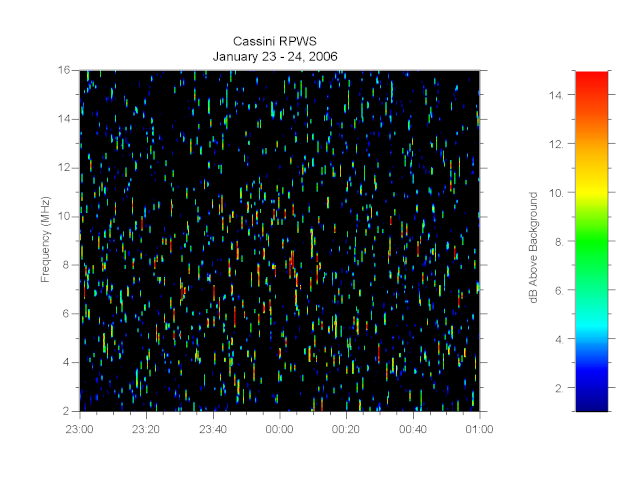
|
|
|
|
|
|
Saturn has lightning, apparently deep in its atmosphere, which generates strong radio emissions, similar to the cracks and pops one hears on an AM radio during a thunderstorm. First discovered by Voyager 1, these radio emissions are the only direct evidence of lightning at Saturn, so far. The Cassini Radio and Plasma Wave Science (RPWS) instrument sweeps in frequency up to 16 MHz. Since the lightning-related radio emissions are emitted over a broad range of frequencies but last only about one thirtieth of a second, a burst appears at whatever frequency the instrument happens to be tuned to at the moment of the burst. So, in this representation of the RPWS observations of a strong thunderstorm beginning on January 23, 2006, the radio emissions appear as speckles at random frequencies above about 2 MHz. These records were converted to sound by using the amplitude and duration of the bursts to create an audio signal. The sound of the radio emissions can be heard by clicking on the button labeled "Play audio" or by selecting the animated video which shows a cursor that indicates time on the spectrogram. In this audio clip, time is compressed by a factor of about 260. That is, this 28 second clip represents two hours of Cassini observations. The actual occurrence rate of the flashes during the peak of this storm is about one every two seconds. You can also view or download an AVI version of the video. Bill KurthRPWS Deputy Principal Investigator |
 The audio files found at this site are available
The audio files found at this site are available